Search Images
Browse Content (p. 947)
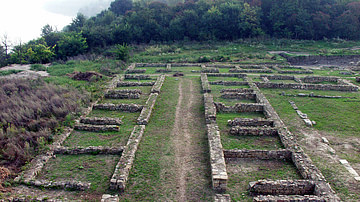
Image
Roman Military Hospital, Novae
The Roman military hospital (or Valetudinarium) in Novae, Bulgaria. Novae was the site of an important Roman fortress along the Danubian border. Like other major Roman fortresses along the borders of the Roman Empire, this fort had its own...
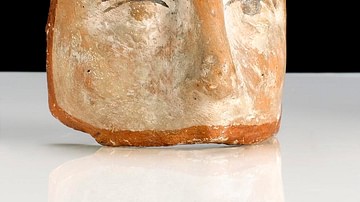
Image
Roman Votive Face
This glazed and painted terracotta face of uncertain provenance was probably intended as a votive offering, probably for the healing of a skin condition. Votive offerings were often dedicated at the temples of gods associated with healing...
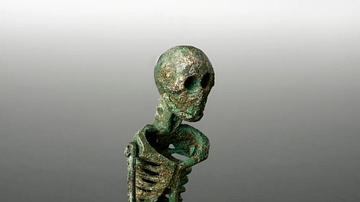
Image
Roman Memento Mori, Bronze
A little over 110 mm (4.3 inches) high, this small bronze figure of a skeleton is a "memento mori" (Latin for "Remember you must die"). These figures were handed out at gatherings and celebrations, as a reminder of the threat of mortality...

Image
Roman Votive Male Torso, from Isola Farnese
Ancient Romans often dedicated votive objects to specific gods associated with healing in the hopes of recovery. These objects were in the form or representation of the affected body part and would be left at the temple of a god. This...

Image
Lancelot
"Lancelot at the Chapel"
Illustration from the 1902 CE Book of Romance.

Image
Ulrich von Zatzikhoven
Ulrich von Zatzikhoven, Lanzelet
Codex Palatinus Germanicus 371, 1420 CE
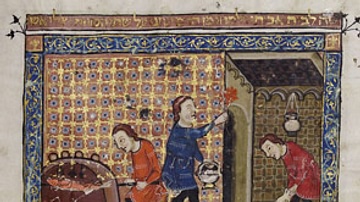
Image
Depiction of a Medieval Passover from the Rylands Haggadah
An illustration from the so-called "Rylands Haggadah", made in 14th Century CE Catalonia, Spain. The upper register of the illustration portrays the preparation for Passover by painting the doorposts with the blood of a sacrificial lamb...
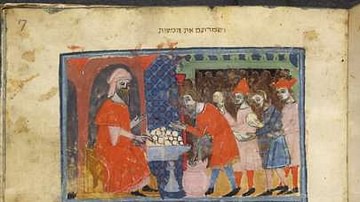
Image
Passover Preparations in the Sister Haggadah
Miniature depicting the preparation for Passover, from the Sister Haggadah manuscript, Barcelona, 14th century. In the upper register, a man distributes unleavened bread (matzot). In the lower register, two women clean the house for the...
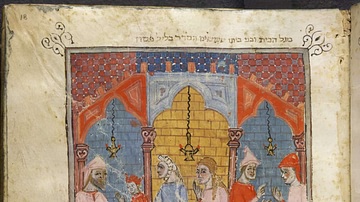
Image
Depiction of a Seder from the "Sister Haggadah"
An illustration of a Jewish family sitting around a Seder table and discussing the Haggadah during Passover. The image comes from a "Sister Haggadah", made in 14th Century CE Barcelona, Spain. The manuscript is now part of the collection...
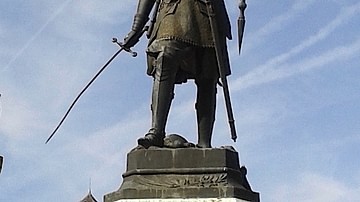
Image
Joan of Arc Statue, Beaugency
An 1896 CE statue of Joan of Arc (l. c. 1412-1431 CE), Beaugency, Loiret, France.